TREATMENTS
Correction of knee bone deformities
Solutions for Genu varus and Genu valgus.
BONE DEFORMITIES IN FIGURES
%
of patients present genu varum.
%
of patients present genu valg.
significantly increases the load in the compartment.
times more likely an ACL rupture in bone deformities.
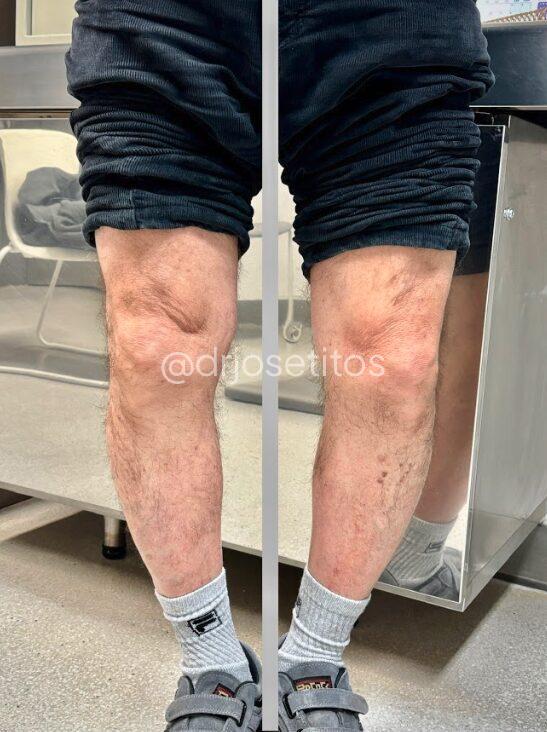
Bone deformities
Proper alignment is essential to prevent premature joint wear and tear, reduce pain and improve mobility.
DESCRIPTION
What are bony deformities of the knee?
Leg alignment is critical to understanding how forces and loads are distributed through the joints, especially over the knee.
The load axes are imaginary lines representing the direction of the forces acting on the leg.
The difference between the mechanical and anatomical axis may indicate a misalignment, which can lead to joint problems. Proper alignment is essential to prevent premature joint wear, reduce pain and improve mobility.
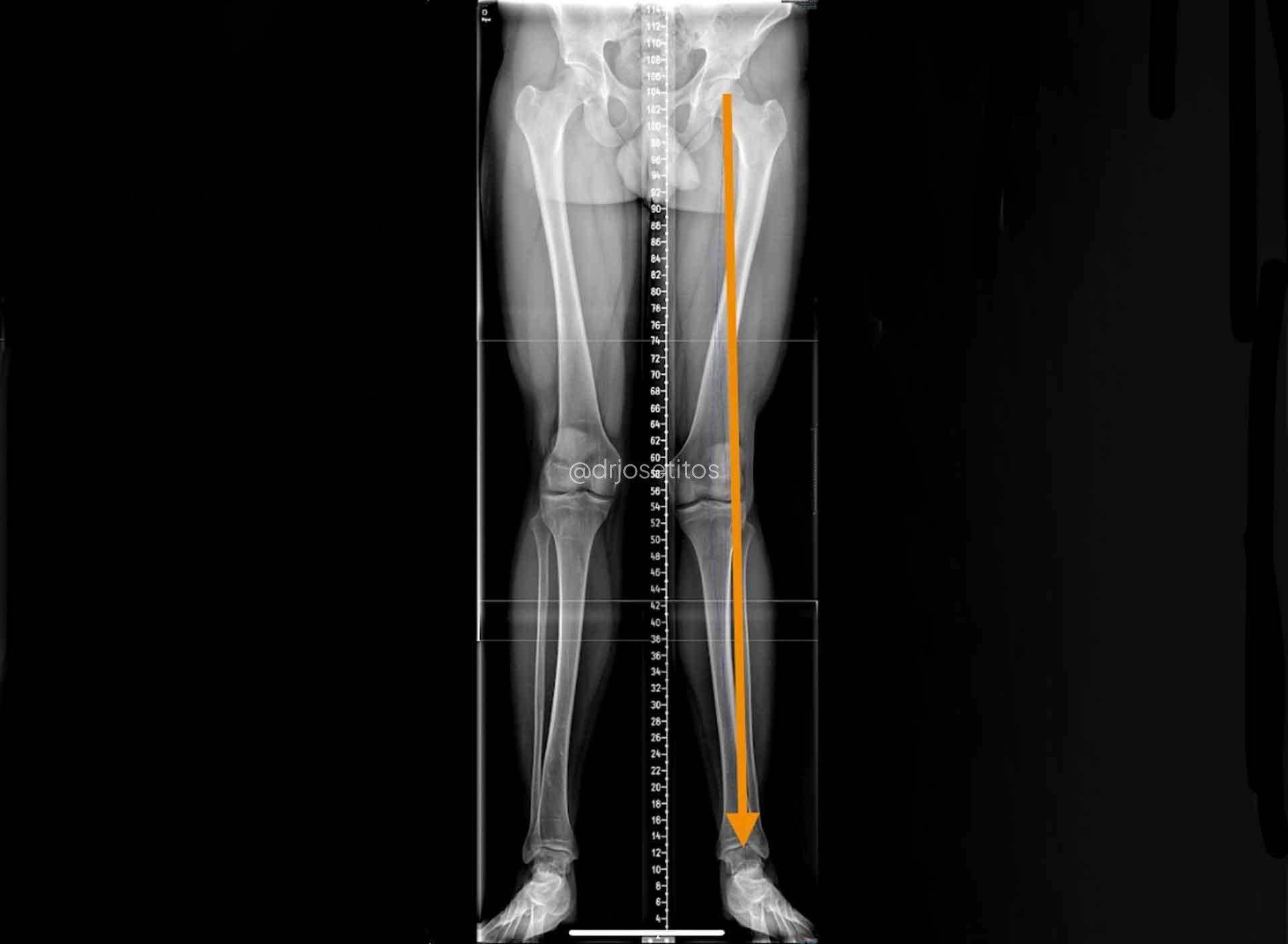
Considerations to be taken into account
- Mechanical axis of the leg (HKA – Hip-Knee-Ankle): This axis passes through the center of the femoral head, the center of the knee and the center of the astragalar dome (top of the ankle). Ideally, this axis should be aligned to ensure an even distribution of forces across the knee joint.
- Anatomical Leg Axis: This axis follows the natural line of the leg, from the head of the femur to the ankle.
- Miculicz line: it is the straight line that joins the center of the femoral head and the midpoint of the ankle, important to know where the knee is positioned.
- Fujisawa point: located at approximately 62% of the width of the tibial plateau, measured from the internal region.
SYMPTOMS
Symptoms associated with the
knee bone deformities

Pain
Pain in the knees or feet.

Mobility
Difficulty walking or running.

Dysmetria
Alterations in leg length.
CAUSES
Causes of bone deformities
Longitudinal rupture
It extends along the meniscus, parallel to its curvature.
Congenital
Some people are born with a genetic predisposition to these deformities.
Child Development
It is common for young children to present genu varum up to 2 years of age and genu valgum up to 8 years of age, as these are normal stages of development.
Trauma or Injury
Knee injuries, such as fractures or dislocations, can alter the alignment of the joint.
Infections
Severe infections affecting the knee joint can lead to deformities.
Longitudinal breakage
It extends along the meniscus, parallel to its curvature.
Inadequate Footwear
Wearing shoes that do not provide adequate support can contribute to leg misalignment.
Arthritis
Arthritis, especially osteoarthritis, can lead to deformities due to wear and tear of joint tissues.
Post-meniscectomy syndrome
Symptoms that may arise after surgical removal of part or all of a meniscus in the knee because the meniscus no longer acts as a shock absorber for body weight.
TYPES OF BONE DEFORMITIES
Genu varo
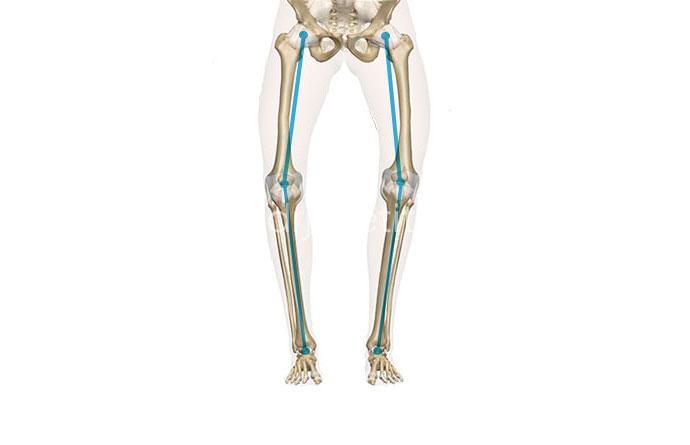
Genu varum is a knee deformity in which the legs are bowed outward. The distance between the two knees is increased with the ankles together, commonly referred to as hooped or circled legs.
This misalignment can generate pressure and wear on the inner region of the knee, contributing to various joint problems, such as medial knee osteoarthritis, meniscal tears, ligament injuries or chronic pain.
Genu valgus
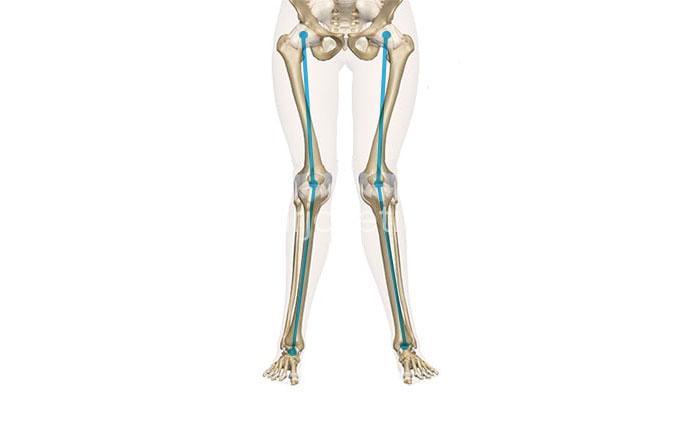
Genu valgus is the opposite deformity of genu varum. In this condition, the knees come closer together while the feet are separated. They are called crossed legs or X-legs.
This misalignment can generate pressure and wear in the external region of the knee, contributing to various joint problems, such as lateral knee osteoarthritis, meniscal tears, ligament injuries or chronic pain.
SURGICAL TREATMENT OF SKELETAL DEFORMITIES
Osteotomy
Osteotomy is a surgical procedure in which a bone is cut and repositioned to correct a deformity or to relieve pressure on a joint. The objectives are:
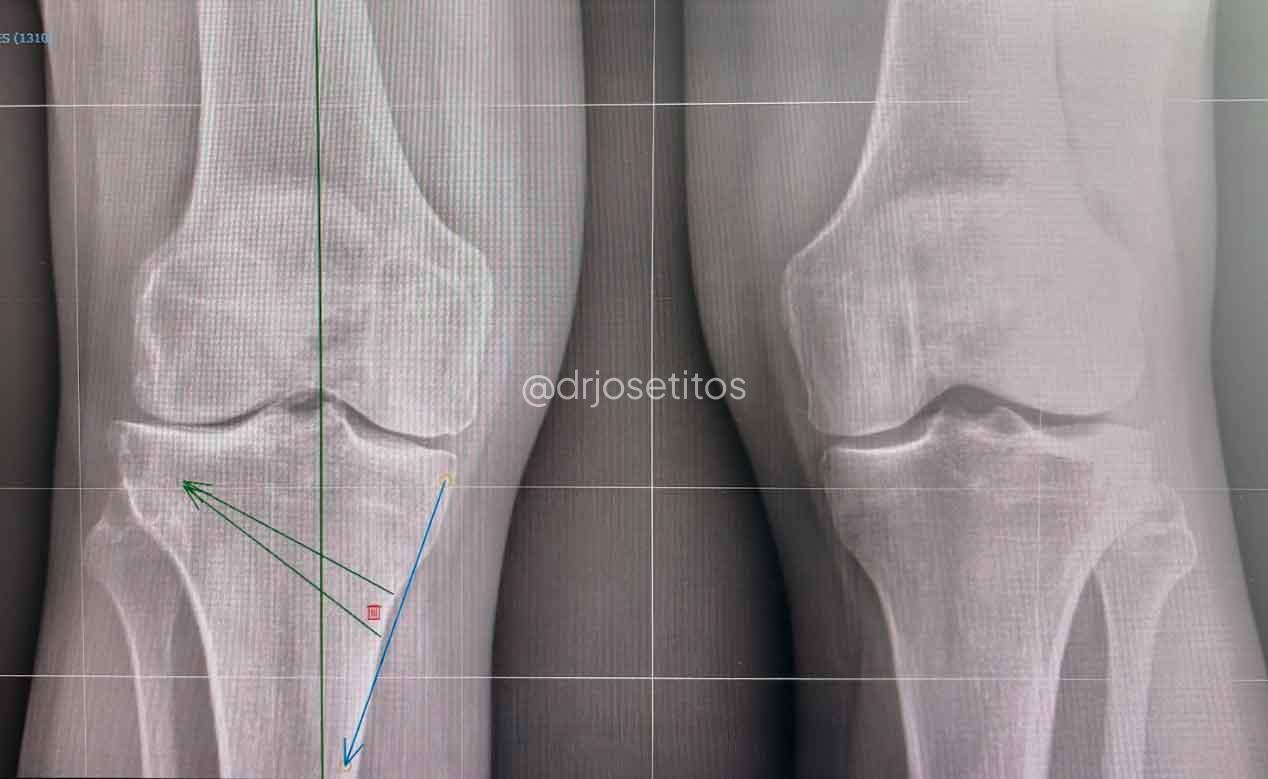

Pain relief
In cases of mild osteoarthritis, an osteotomy can redistribute body weight more evenly to reduce the load on the affected joint.

Improve function
Correcting bone alignment can improve joint function and mobility.

Preventing or delaying the need for prosthetics
In some cases, an osteotomy may delay the need for a joint replacement in young patients.
Surgical technique
Osteotomies around the knee can be performed on either the tibia or the femur. They are classified as: addition osteotomies (a bone window is opened) or bone subtraction osteotomies (bone is removed). Generally, the most frequent are medial tibial addition and lateral femoral subtraction.
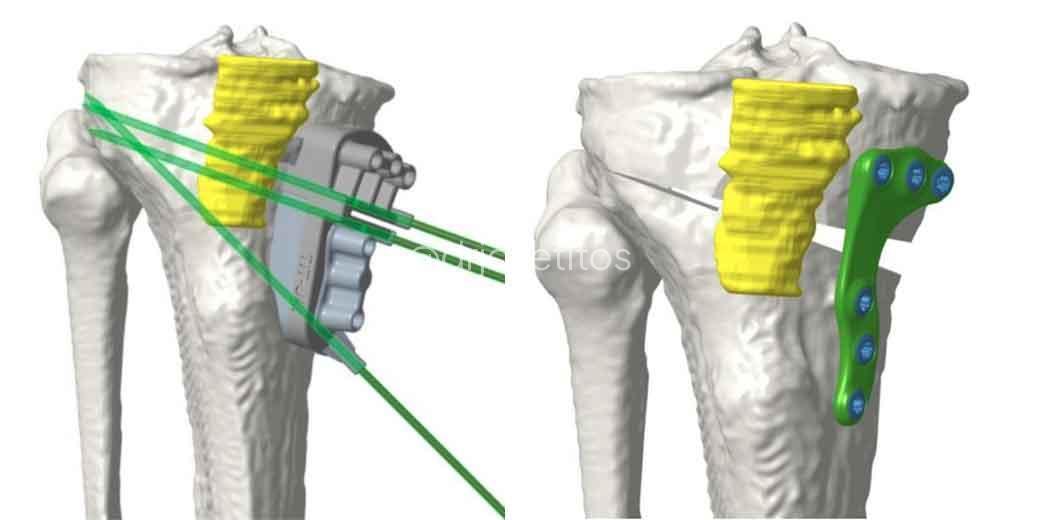
Preoperative evaluation
Loading radiographic studies of the knees and the entire leg are performed to plan the osteotomy.
2. Surgery
Under anesthesia, the surgeon makes the cut in the bone and repositions it according to the plan. A diagnostic therapeutic arthroscopy can be associated if meniscal, chondral or ligament injuries are known.
3. Fixing
Plates, screws or external fixators are used to hold the bone in its new position while it heals.
4. Rehabilitation
After surgery, a rehabilitation program is followed to restore joint function and mobility.
5. Postoperative
The postoperative period is crucial for a successful recovery. It is advisable to start partial weight bearing using crutches in the immediate postoperative period, always following the indications of a specialized rehabilitator.
After osteotomy, the correction of the leg axis is remarkable, with the reorientation of the loading forces on the knee, which improves alignment and better distributes the loads, reducing wear and progression of osteoarthritis.
Advanced osteotomy technique
Custom Cutting Guides (PSI)
For greater precision, PSI (Patient Specific Instrumentation) customized cutting guides are used. This innovative technique allows the cuts to be adapted to the patient more accurately, improving surgical results and reducing possible complications by perfectly correcting misalignment. PSI guides are customized based on preoperative CT images, making the surgery more precise and efficient compared to traditional methods.

Video rights Dr. Cory Calendine MD
Contact Form
Send your inquiry through our contact form.
Fill out the form below to book an appointment, make an inquiry or request more information.
I will get back to you quickly.
All fields marked with an asterisk are required fields.
